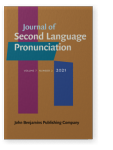Vol. 7:2 (2021) ► pp.183–211
Productive phonological bootstrapping in early EFL of 4th-graders in German primary schools
It has been suggested that learners can use their phonological knowledge receptively in other linguistic domains, for instance to support lexical acquisition, a process referred to as “phonological bootstrapping” (Christophe et al., 1997). However, research on productive phonological processes in early foreign language acquisition has been rare. The present study addresses this gap and shows that phonology functions as a deliberate productive resource to compensate for lexical limitations in early foreign language acquisition. 184 4th grade students learning English at German primary schools were asked to tell a picture story in English. Findings show that the majority of learners use a strategy we name “productive phonological bootstrapping” to fill lexical gaps by adapting German items to the English sound system. Similar phonological phenomena as in other language contact domains occur in a combination with manipulations based on differences between German and English, suggesting an interplay of universal and language-specific processes.
Article outline
- 1.Introduction
- 2.Phonology as a resource?
- 2.1Phonology and the lexicon in acquisition
- 2.2Productive phonological processes
- 3.English-German contrastive phonology
- 4.The study
- 4.1Hypotheses
- 4.2Participants
- 4.3Materials
- 4.4Procedure
- 4.5Analysis
- 4.6Results
- 4.6.1Quantitative analysis and overview
- 4.6.2Qualitative analysis of most frequent bootstrapping processes
- 4.6.2.1Fronting
- 4.6.2.2Vowel reduction/monophthongization
- 4.6.2.3Lengthening/dipthongization
- 4.6.2.4Gliding
- 4.6.2.5Deletion
- 4.6.2.6Affixation
- 5.Discussion
- 5.1Is phonological bootstrapping a resource for early EFL learners in speech production?
- 5.2Is productive phonological bootstrapping an intentional and beneficial resource?
- 5.3Types of phonological processes
- 6.Conclusion
- Note
-
References
